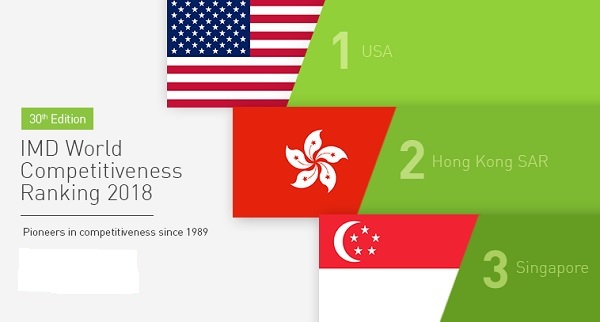
The top five most competitive economies remain the same as the previous year but their order changes. The United States returns to #1, followed by Hong Kong, Singapore, the Netherlands and Switzerland. The return of the United States to the top is driven by its strength in economic performance (1st) and infrastructure (1st). Hong Kong takes a somewhat different approach exploiting its government efficiency (1st) and business efficiency (1st).
The remaining places in the top 10 are occupied largely by Nordic countries: Denmark, Norway and Sweden rank 6th, 8th and 9th respectively. These countries show strong performance in the overall productivity of the private sector and its management practices. The UAE (7th) and Canada (10th) close the top of the rankings.
• Raise awareness, prepare and qualify the workforce to the digital economy, support digital innovation in SMEs.
• Improve State governance efficiency and further the entrepreneurial dynamic through administrative simplification.
• Create a friendly environment for start-ups and boost entrepreneurship.
• Significantly increase housing supply to meet the rising demand.
Arturo Bris noted “this year’s results reinforce a crucial trait of the competitiveness landscape. Countries undertake different paths towards competitiveness transformation.” He added “countries at the top of the rankings share an above the average performance across all competitiveness factors, but their competitiveness mix varies. One economy, for example, may build its competitiveness strategy around a particular aspect such as its tangible and intangible infrastructure; another may approach competitiveness through their governmental efficiency.”








